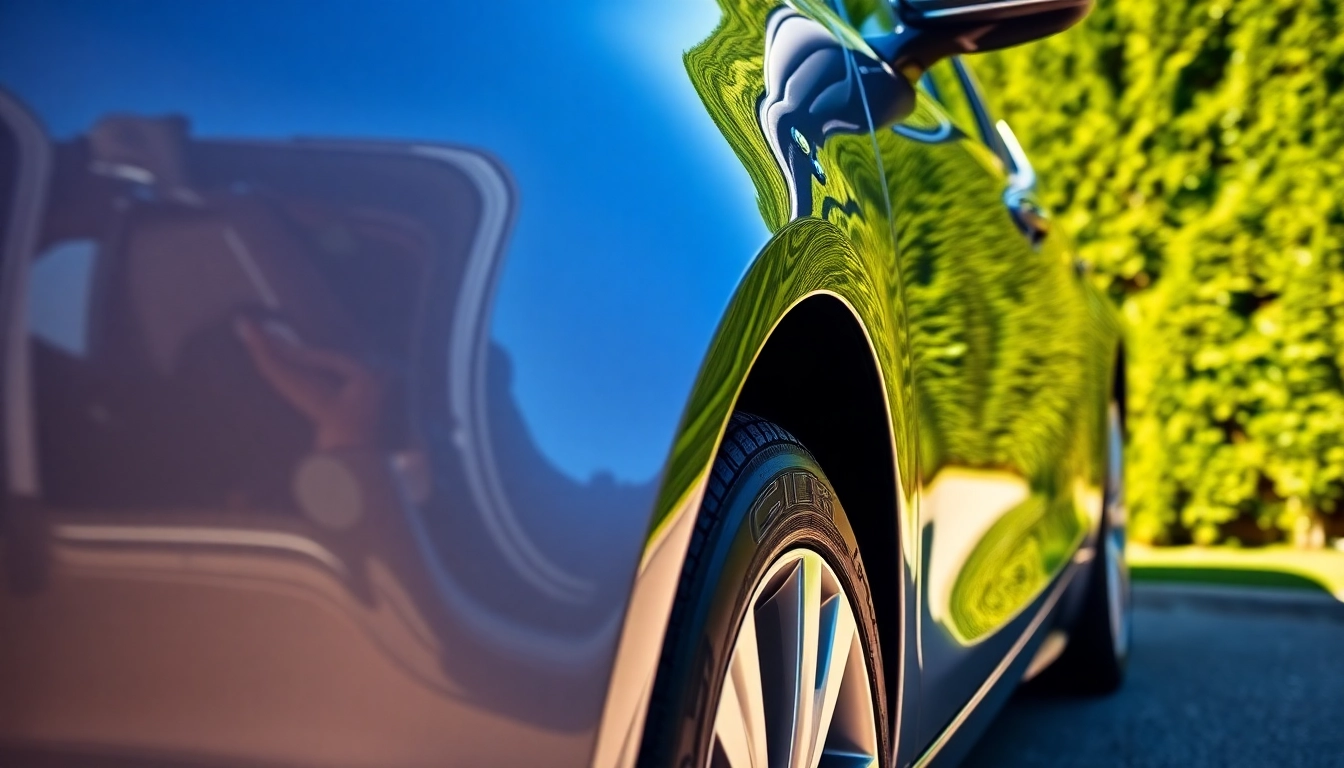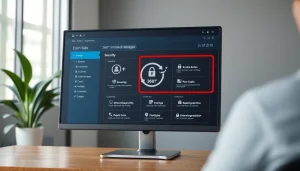Professional Car Detailing: How to Keep Your Car Shiny and Pristine Here
1. Understanding Car Care Essentials
Maintaining the pristine condition of your car’s exterior and interior is essential for preserving both its aesthetic appeal and resale value. The foundation of effective car care lies in understanding the necessary products and techniques that keep your vehicle shining and looking brand new. As a car owner, it is crucial to invest time in learning about car care essentials that ensure longevity and visual appeal.
1.1 The Importance of Quality Cleaning Products
Using high-quality cleaning products is non-negotiable when aiming for an immaculate car finish. Cheap cleaning solutions can contain harsh chemicals that might damage the car’s paint or protectants over time. Quality products often contain specialized ingredients designed to lift dirt and grime without scratching surfaces. For impactful results, consider using biodegradable soaps and pH-balanced cleaners that are safe for both your vehicle and the environment.
1.2 Tools You Need for Effective Detailing
Having the right tools at your disposal is equally as important as the cleaning products you choose. Essential tools for effective car detailing include:
- Microfiber Towels: Ideal for drying and polishing surfaces without leaving streaks or lint.
- Buckets: At least two buckets should be used, one for washing and one for rinsing, to avoid dirt contamination.
- Detailing Brushes: These are handy for cleaning intricate and hard-to-reach areas.
- Wax Applicators: To apply wax evenly and ensure thorough coverage on the paint surface.
1.3 How Regular Maintenance Ensures Longevity
Regular maintenance is essential for the longevity of your vehicle. Neglecting routine cleaning and detailing can lead to the buildup of contaminants, which can deteriorate the paint job. A consistent washing schedule, accompanied by waxing and sealing procedures every few months, can significantly reduce wear and keep your car looking its best. Regular maintenance not only enhances aesthetic appeal but also provides protection against environmental elements, ultimately extending the life of a vehicle’s finish.
2. Choosing the Right Car Wash Towels
Choosing the right towels for washing and detailing your car can impact your results significantly. Not all towels are created equal; the choice of fabric can determine how effective and safe your washing and drying methods will be. The right car wash towels will leave your vehicle free of scratches and streaks.
2.1 Top Features to Look for in Towels
When selecting car wash towels, consider the following features to ensure optimal performance:
- Absorbency: Look for towels that can hold a significant amount of water without becoming saturated quickly.
- Durability: Choose towels that are made from high-quality materials such as microfiber, which can withstand frequent use and washing.
- Scratch Resistance: Ensure that the fibers are soft enough to prevent scratching the paint of your car.
- Lint-Free Design: Towels should not leave behind any lint or fibers after cleaning, adding to the overall finish.
2.2 Comparison Between Different Fabric Types
Several fabric types are popular for car wash towels, each with its own benefits:
- Microfiber: Excellent for both washing and drying, microfiber towels are plush and aid in capturing dirt and moisture effectively.
- Cotton: Traditional towels, such as terry cloth, are absorbent but may not offer the same scratch-free benefit that microfiber provides.
- Chamois: Known for their absorbency, chamois towels are often used for drying due to their ability to hold moisture without streaking.
2.3 Where to Buy the Best Towels Here
To ensure you’re purchasing the best towels for your car maintenance needs, consider reputable auto shops, detailing supply stores, or online retailers specializing in automotive products. High-quality options can be found at sites that cater specifically to car enthusiasts, where product reviews can help guide your purchase. For optimal performance, shop for towels that meet the criteria discussed above. Here you can find excellent recommendations.
3. Step-By-Step Car Wash Process
Understanding how to properly wash your car is critical for achieving the best results. A structured step-by-step process can make the task easier and more efficient, preventing damage to your vehicle’s surface and ensuring a thorough clean.
3.1 Pre-Washing Techniques to Remove Dirt
Before starting the wash, it is essential to loosen any stubborn dirt that could scratch the paint during washing. Techniques you can use include:
- Rinse: Begin with a gentle rinse using a hose to remove any loose dirt and debris.
- Pre-Wash Solution: Apply a pre-wash solution that can help break down grime, allowing for easier cleaning.
- Dirt Removal Tools: Simple tools like a foam cannon can effectively apply pre-wash solutions with even coverage on your vehicle’s body.
3.2 Proper Washing Methods for Different Surfaces
Different surfaces require tailored washing techniques to avoid damage:
- Body Panels: Use a microfiber mitt to wash from top to bottom, rinsing the mitt frequently to avoid dirt transfer.
- Wheels and Tires: Use a separate brush with a sturdy bristle to clean wheels and tires, as they accumulate different types of grime.
- Windows: Use a glass cleaner or a vinegar-water solution with a clean microfiber towel specifically designed for glass.
3.3 Drying Techniques to Avoid Scratches Here
Proper drying is essential to avoid streaks and scratches. Follow these techniques:
- Pat Dry: Rather than dragging the towel across the surface, use the patting technique to soak up moisture.
- Blower Drying: If available, use a specially designed blower to eliminate water from difficult areas without contact.
- Dedicated Drying Towels: Use high-quality drying towels with good absorbency and soft fabric to wipe the exterior safely.
4. Advanced Detailing Techniques
Once your car is clean, taking the next step to enhance its aesthetic with advanced detailing techniques can produce exceptional results. These techniques focus on restoring and protecting the car’s finish.
4.1 Polishing for Gloss and Protection
Polishing is essential to eliminate minor scratches, swirl marks, and oxidation. The process involves:
- Choosing the Right Polish: Different grades of polish are available; lighter polishes are for minor imperfections while more abrasive formulas are for deeper scratches.
- Applying Polish: Use a dual-action polisher for uniform coverage and avoid swirling by employing a consistent technique.
- Finishing Polish: Follow up with a finishing polish to add brilliance and further enhance the shine.
4.2 Waxing: The Final Touch for Shine
Waxing creates a protective layer on your car’s paint, enhancing shine and providing a shield against environmental elements:
- Types of Wax: Synthetic waxes last longer and provide a high-gloss finish, while natural waxes offer a warm, deep shine.
- Application Techniques: Use an applicator pad to apply wax evenly, allowing it to haze before buffing it off with a microfiber towel.
4.3 Interior Detailing Tips for a Fresh Look
The interior of your vehicle deserves as much attention as the exterior. Some tips for thorough interior detailing include:
- Vacuuming: Begin by vacuuming all surfaces to remove dirt and debris, paying special attention to hard-to-reach areas.
- Interior Cleaner: Use an interior cleaner suitable for dashboards, leather, or fabric to freshen surfaces.
- Conditioning: For leather seats, utilize a leather conditioner to maintain its suppleness and prevent cracking.
5. Troubleshooting Common Car Shine Problems
Despite best efforts, issues can arise with your car’s finish. Understanding and addressing these common car shine problems can help restore your vehicle to its glory.
5.1 Addressing Water Spots and Swirls
Water spots and swirl marks can mar an otherwise flawless appearance:
- Water Spot Solutions: Specialized water spot removers can effectively lift these mineral deposits off the surface.
- Swirl Correction Techniques: Polishing can rectify swirl marks, followed by sealing to prevent future occurrences.
5.2 Solutions for Dull Paint or Fading
Over time, car paint can dull due to oxidation or environmental exposure. Solutions include:
- Cleansing Clay Bars: These can effectively remove embedded contaminants to restore shine.
- Resurfacing Products: Consider using a glaze or other resurfacing products to replay paint gloss.
5.3 Expert Recommendations for Maintenance Here
Following expert recommendations for ongoing maintenance is key to preventing shine problems in the future. Recommendations often suggest:
- Regularly washing your car monthly to prevent the buildup of dirt and contaminants.
- Applying a durable sealant every six months to protect the paint.
- Employing a maintenance wash to refresh the vehicle without intensive cleaning measures.














Post Comment